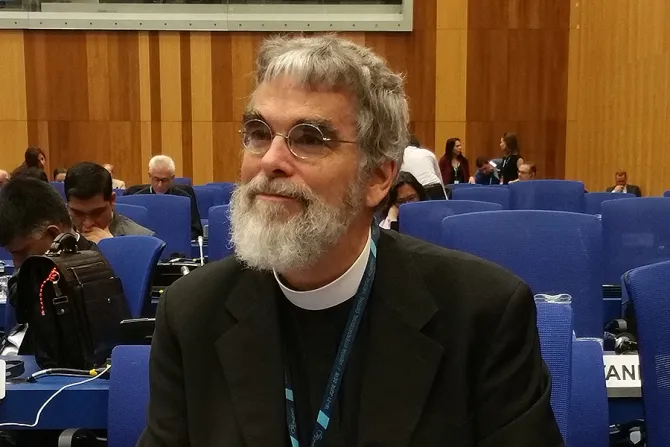Rome, Italy, Jan 8, 2015 / 04:03 am
Vatican astronomer Brother Guy Consolmagno was 30 years old and just starting his career as an astronomer when he faced a personal crisis.
"I couldn't justify my life," he told CNA in a recent interview. "I said 'Why am I doing astronomy when people are starving in the world?'"
Br. Consolmagno promptly quit his job and joined the Peace Corp to "do something good for people."
But when he arrived in Africa, he discovered he couldn't exactly leave astronomy behind.
"When I got to Africa, the people in Africa asked me about astronomy," he said. "They wanted to look through my telescope. They were fascinated with space. I think that it's part of the human hunger, that hunger that's not for bread alone, that makes us want to know who we are and why there is something instead of nothing."
"Ultimately, it's a religious search."
Br. Consolmagno takes up this religious search in his new book "Would You Baptize an Extraterrestrial?" (Image, 2014) which he co-authored with Fr. Paul Mueller of the Vatican Observatory.
The 293-page book reads as a dialogue between Br. Consolmagno and Fr. Mueller as they tackle six of the most common questions they face in their line of work.
"They tend to be questions that presuppose some kind of conflict between science and faith," Fr. Mueller told CNA. "What we wanted to do in the book was start with those questions, try and peel back some of the presuppositions, and maybe shift the questions sideways a little bit to questions that maybe don't presuppose a conflict and can go a little deeper."
For example, the book's fourth chapter addresses the Star of Bethlehem. Was there really a Star? Was it a miracle, or can it be explained by science? What does the star mean – what does it signify?
The two men gradually rule out theories that the Star could have been a supernova or even a comet. They offer a theory of planetary alignment by retired Rutgers University astronomer Michael Molnar as a possible key to the mystery of the Star.
But, proving the scientific credibility of the Star of Bethlehem is not the goal for Br. Consolmagno and Fr. Mueller. Instead, they believe a deeper question about miracles is at stake.
"It's not hard to explain naturally that something happened," Fr. Mueller said. "What's miraculous about (the Star of Bethlehem) from our point of view is not that there's some kind of violation of the laws of science, but that God gave a great sign."
Fr. Mueller clarified that miracles are not, by definition, violations of the law of science because "science comes around long after miracles are around."
"Miracles are fundamentally some great sign of the Kingdom of God," Fr. Mueller said. "Whether they happen to be a violation of the laws or not. That's a secondary question."
Br. Consolmagno and Fr. Mueller address all six questions in this way. And the book's format as a dialogue offers a sort of blueprint that readers can adopt in their own conversations about faith and science. The dialogue format also aims to echo the dialogue of faith and science.
"(Science) is not a big book of facts, it's a dialogue, a conversation about the facts," Br. Consolmagno said. "That's what religion is. It's not a big book of rules, it's a conversation that we have in our Church, among ourselves, and with God."
"And so if we want to show how science works, how religion works, and how they work together – we have to show the dialogue."
The book's humor is also inescapable and Br. Consolmagno told CNA that this aspect is key.
"It emphasizes a really important point that we want to make; none of us has all the answers," he said. "And if you can't laugh at yourself and at the hubris of even thinking we have answers, then you're going to come up with answers that are wrong, but you're wedded to them far too deeply."
"One of the joys of science and philosophy is learning how to live and enjoy a mystery."




